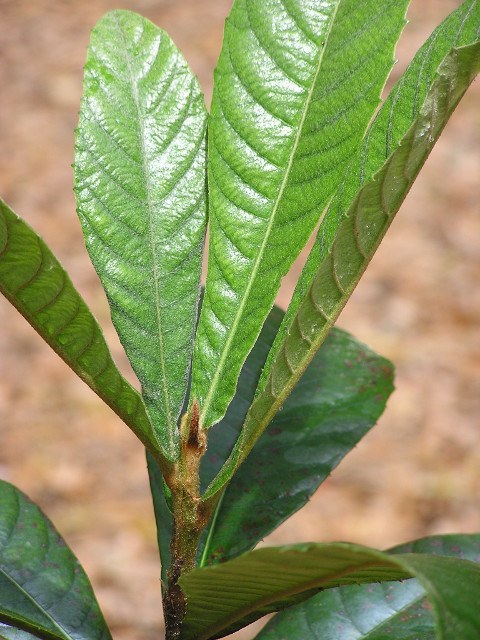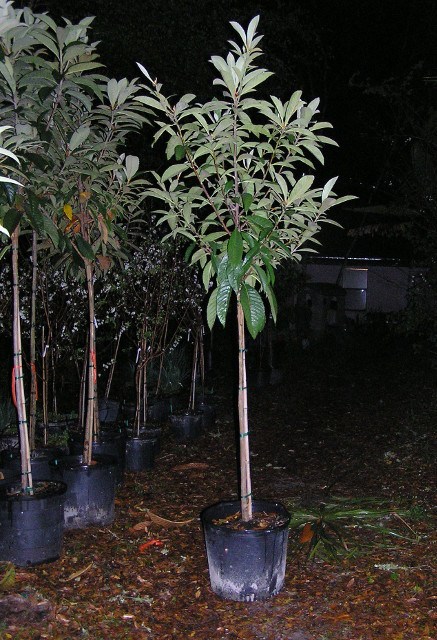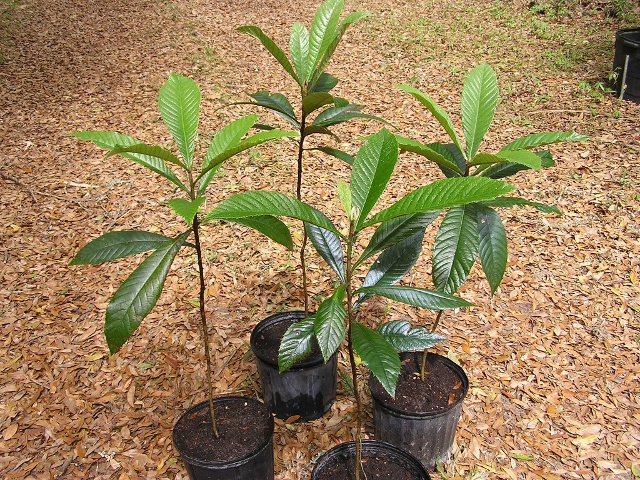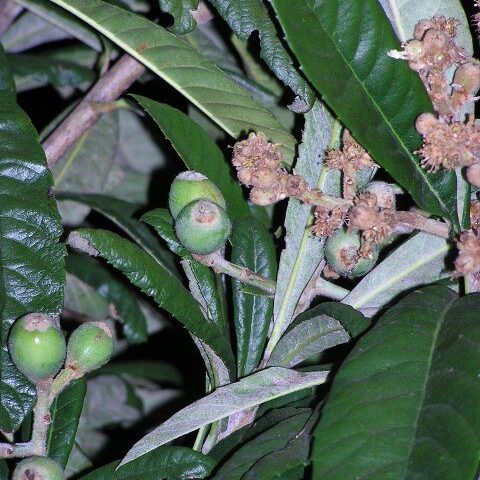Loquat Tree (Eriobotrya japonica)
native to south-central China;
aka Japanese Plum, Chinese Plum or Maltese Plum (Turkey)
Large evergreen shrub or small tree
can grow 16-33' tall; normally 10-13';
dark green, tough, leathery leaves; grows in zones 8b-10
Small, white, super fragrant 1" flowers appear in autumn or early winter, and the fruits ripen in late winter or early spring. Grows outdoors in zones 8-11. Can be container grown in colder areas. The colder the winter, the earlier the loquat blooms.
Loquat fruit grows in clusters and are oval, rounded or pear-shaped. Fruit is sometimes described as a mixture of peach, citrus & mild mango.
Loquats have a high sugar, acid and pectin content. They are high in vitamin A, dietary fiber, potassium, and manganese.
Specific varieties:
'CHRISTMAS' Loquat:
This grafted variety is very early: ripens mid to late December, ahead of the frosts and produces copious amounts of huge fruits -- up to 1.5" in diameter. Fruit is bright yellow with a tangy apricot flavor.
'YEHUDA' Loquat:
very large, sweet, juicy fruits, ripens February to March in Florida.
SEEDLING GROWN:
We're finding the seedling grown loquats have more growth vigor, overall hardiness, and higher quantities of fruit than the grafted ones. Our 15gal sizes generally bear fruit in the first year after planting --- both the grafted and the seedling grown.

average size of fruits on seedling tree

loquat leaves

15gal grafted Loquat 'CHRISTMAS'
Starting your own seedling loquats are a fun project, but they generally don't produce fruit for 8-10 yrs! The professional nurseries are pushing the plants with lots of fertilizers to get results sooner, and so a 5yr old tree can produce fruit. Flavor can vary a bit from plant to plant, but juiciness seems to be pervasive. Grafting trees will bear fruit in 2-3 yrs after the graft. Expect fruit the first year from our 15gal size.

typical 4.5yr old 15g loquats
ORDER HERE:
#1 in stock: seedling grown loquats 15g / ready to bear.
sometimes 3g & 7g, at least in the spring; ask us;
Please inquire first if interested in grafted varieties: those are harder to come by and don't seem to mature as quickly in their "teen" years. (yes they bear sooner after grafting than planting a seed, but not as abundantly)

1.5yr old / 3g loquats

3.5yr old / 7g loquats

blossoms / fruit on 6yr old seedling

6 yr old 'super 15g' loquats --- rare

